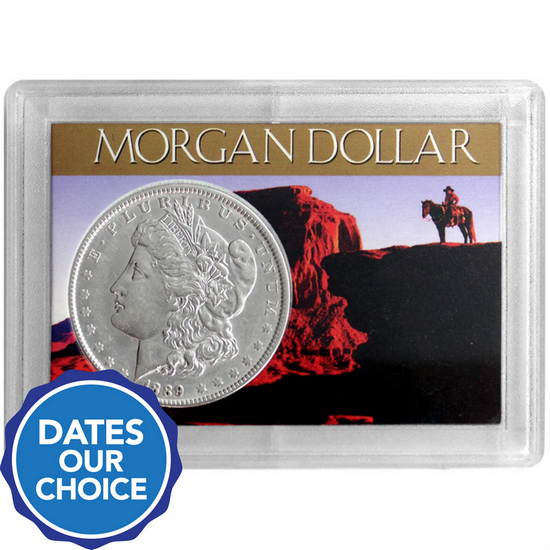
Morgan Silver Dollars. Need we say more?
The likelihood that someone in the coin business or an avid numismatic collector will tell you that their favorite coin is the Morgan dollar is rather high (in our opinion). Why would we take that chance? With a history that spans back just over 140 years ago since its beginnings, its popularity and numismatic impact have not dropped off in the slightest. With as many coins that have been produced in that time frame, whether it be silver, gold, platinum, copper, etc., that is quite a statement.
In understanding why this silver dollar is so important to the business and really United States coinage, let us look back to its beginnings and why the coin business as a whole has held it high on a pedestal for so long.
George T. Morgan - The Designer
United States coinage was anything but satisfactory in 1876 according to the Director of the United States Mint, Henry Linderman. With Chief Engraver William Barber at the helm, his feelings towards creating a new version of the silver dollar were strong, so much so that George T. Morgan was hired in at the Mint as an assistant engraver. An Englishman with considerable talent and desirable artistic abilities, Morgan was commissioned for the new design of the silver dollar which was a bit of a slap in the face to the Chief Engraver and his son, Charles Barber, at the time.
Regardless of hard feelings, Morgan found himself studying American art at the Academy of Fine Arts in an attempt at getting more familiar with communicating designs that were more Americanized. It was then that he found himself leaning towards a specific design sought to represent American female beauty. Though it was first thought to want a head representing that of a “Goddess of Liberty” or something similar, it was finally decided upon that the design would feature the profile head of an actual “living American girl” that would sit while being sketched.
While studying at the Academy, Morgan looked frivolously for the right young woman to model for him. He struggled to find one that aligned with his vision but eventually found her via an acquaintance and fellow artist. The young woman posed for Morgan (later outed as 18-year-old Anna W. Williams) as he was quoted as saying she had “the most perfect profile he has ever seen in England or in this country.” By 1877, George T. Morgan had created the design for the new Morgan Silver Dollar that would be produced from 1878-1904 and then again in 1921.
The Morgan Silver Dollar - 1878-1904, 1921
Struck at five different Mints (Carson City, Philadelphia, San Francisco, New Orleans, and Denver), the Morgan Silver Dollar was a product of the largest silver strike in the world. The Comstock Lode in 1859 was a part of the largest silver mining vein that in turn, flooded silver into the market. The Coinage Act of 1873 would cease the production of silver coins in the U.S. as values were decreasing but the Bland-Allison Act would restore silver production in 1878 as legal tender in addition to alluding to the fact that the government would be responsible for minting two million silver dollars per month.
Morgan Silver Dollars began production in 1878 and were continuously minted until 1904. The aforementioned Comstock Lode would grow tired and silver supply was running at an all-time low in the early 1900s which would briefly end the silver dollar coinage era. During this time, people were already accustomed to using paper money as large silver coins became too heavy to carry around.
Finally, in 1918, the Pittman Act was passed which aimed at restoring the government’s reserve of silver bullion. They melted millions of Morgan Silver Dollars that were being stored, over 270,000,000 to be frank. That same act also required that the purchase of silver to replace the melted dollars would take place which resulted in the minting and production of the 1921 Morgan Silver Dollar. Later that year, the changing of the guards would occur and the Peace Dollar would take over.
Today, key dates of the Morgan Silver Dollar include the 1895-P, 1893-S, 1895-O, 1892-S, 1889-CC, 1884-S, and 1879-CC. The “King of Morgan Silver Dollars” happens to be the 1895 minted in Philadelphia as there only proofs known although records from the Mint show that 12,000 business-strike dollars were produced. The proofs hold a total mintage of just 880 and are extremely rare. The most recent one sold at an auction in April and was certified in a PF63. It went for $57,600 while the NGC price guide lists it at $65,000.










